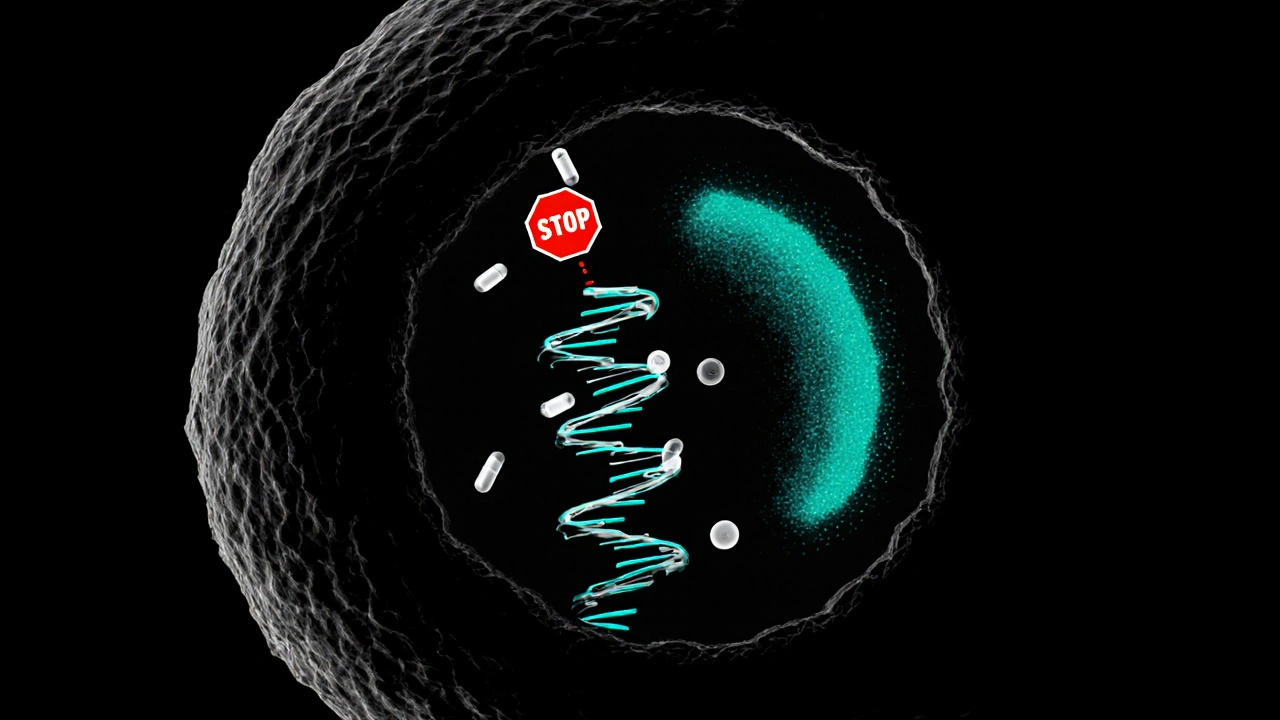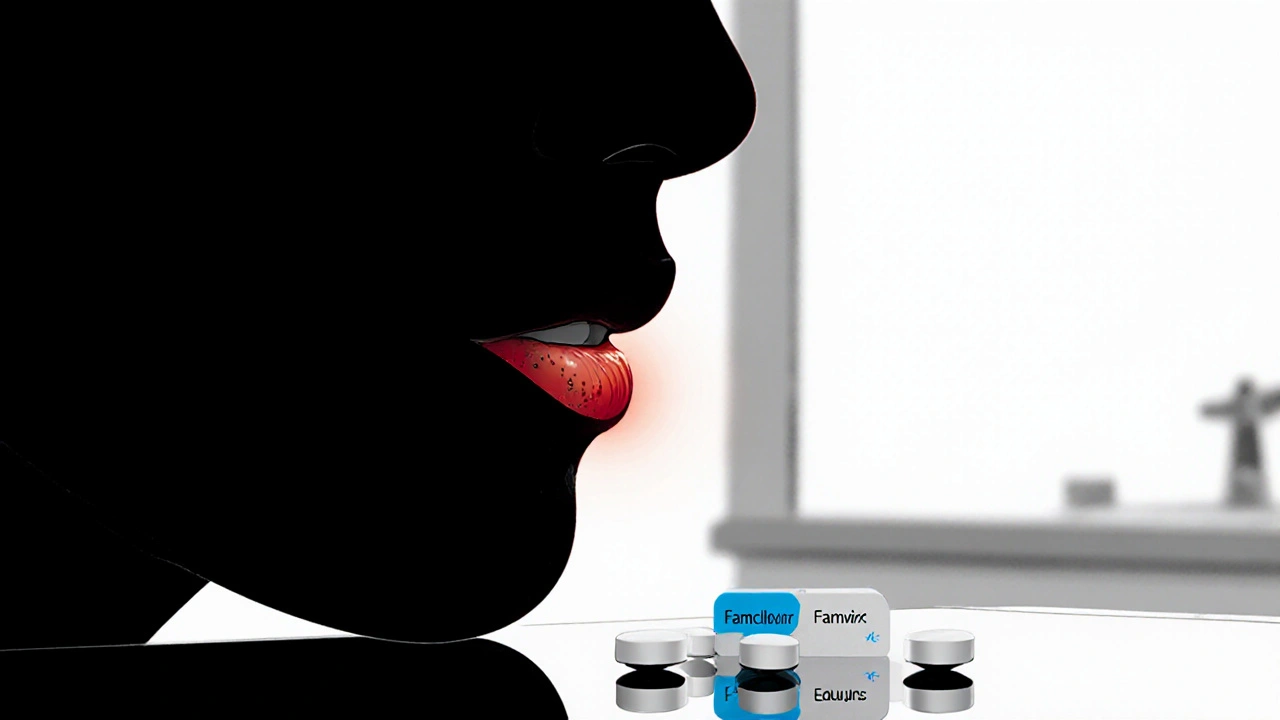When a cold sore, shingles outbreak, or genital herpes flare‑up lands on your doorstep, the first question is usually Famvir. But is it the best pill on the shelf, or do other antivirals offer a better fit for your situation? This guide walks you through the major contenders, how they stack up on key factors, and which one might win for different patients.
How Oral Antivirals Work
All the drugs we’ll discuss belong to the nucleoside analog family, which mimics the building blocks of viral DNA. Once inside a cell, they get phosphorylated by viral enzymes and then jam the DNA polymerase, preventing the virus from replicating. This class‑wide mechanism means the drugs share a core effect but differ in how efficiently they get activated, how long they stay in the body, and what side‑effects they bring.
Key Comparison Criteria
- Indications: Which infections does the drug officially treat?
- Bioavailability: How much of the pill reaches the bloodstream?
- Dosing frequency: Once daily, twice daily, or more?
- Onset of action: How quickly does symptom relief start?
- Safety profile: Common and serious side‑effects.
- Cost & insurance coverage: Price per 7‑day course and typical reimbursement.
- Resistance risk: How often do viral strains become resistant?
Antiviral Options at a Glance
| Drug | Primary Indications | Bioavailability | Typical Dose (Adults) | Daily Frequency | Time to Relief | Common Side‑Effects |
|---|---|---|---|---|---|---|
| Famciclovir (Famvir) | Herpes zoster, genital herpes, chickenpox (off‑label) | ≈ 75% | 250mg | 3times/day | 24-48h | Headache, nausea, fatigue |
| Acyclovir | Herpes simplex 1/2, herpes zoster | ≈ 15% | 400mg | 5times/day | 48-72h | Kidney irritation, rash |
| Valacyclovir | Herpes simplex 1/2, herpes zoster, genital herpes prophylaxis | ≈ 55% | 1g (shingles) or 500mg (HSV) | 2-3times/day | 12-24h | Headache, nausea, abdominal pain |
| Penciclovir | Cold sores (topical), genital herpes (oral) | ≈ 40% (oral) | 500mg | 3times/day | 24-36h | Dry mouth, mild GI upset |
Deep Dive Into Each Alternative
Famciclovir is the pro‑drug of penciclovir, meaning it converts inside the body to the active form. Its higher bioavailability lets it achieve therapeutic levels with fewer pills, but the three‑times‑daily schedule can be a hassle for some.
Acyclovir is the oldest oral anti‑herpes agent. It’s cheap and widely covered by insurance, yet the low absorption rate forces a five‑dose regimen that many find inconvenient.
Valacyclovir is essentially acyclovir with a valine ester attached, boosting absorption. The result is a simpler twice‑daily regimen for shingles and once‑daily for HSV suppression, making it a favorite for patients who value convenience.
Penciclovir is best known as a cream for cold sores, but the oral form competes with famciclovir in herpes‑simplex treatment. Its moderate bioavailability and three‑times‑daily dosing sit between acyclovir and famciclovir.

When One Beats the Others: Use‑Case Scenarios
- Shingles (herpes zoster): Valacyclovir often wins for speed of pain relief, thanks to its 55% bioavailability and twice‑daily dosing. Famciclovir is a solid alternative if valacyclovir isn’t covered by insurance.
- Genital herpes outbreaks: Valacyclovir’s once‑daily option is convenient for episodic treatment, while famciclovir offers similar efficacy with a three‑times‑daily schedule. Acyclovir may be chosen for cost‑sensitivity.
- Cold sores: Topical penciclovir cream is usually first‑line. For severe or recurrent oral lesions, oral famciclovir or valacyclovir give faster resolution than acyclovir.
- Suppression therapy: Valacyclovir’s once‑daily regimen proves most adherent for long‑term HSV‑2 suppression. Famciclovir can be used off‑label but requires more pills.
Cost, Insurance, and Availability (2025)
Prices vary by country and pharmacy. In the United States, a 7‑day pack of famciclovir costs about $70USD, while generic acyclovir is under $10USD. Valacyclovir sits at $120USD for a week’s supply, but most private insurers cover 80% of the cost for shingles. In NewZealand, all four drugs are subsidised under the Pharmaceutical Schedule, with patient contribution ranging from $5 to $20 per pack. When budgeting, factor in the number of daily doses: a drug with higher bioavailability often costs more per pill but fewer pills overall.
Safety Profile and Drug Interactions
All four antivirals are generally well‑tolerated, but there are nuances:
- Kidney function: Acyclovir and valacyclovir are cleared renally; dose‑adjust in CrCl<30mL/min. Famciclovir also needs adjustment but is less nephrotoxic.
- Pregnancy: Acyclovir and famciclovir are Category B; valacyclovir is Category C, so clinicians prefer acyclovir for pregnant patients.
- Drug‑drug interactions: Co‑administration with probenecid can raise acyclovir levels. Valacyclovir may compete with other drugs that use organic anion transporters.
Rare side‑effects include neurotoxicity (confusion, hallucinations) at high doses, predominantly with acyclovir in renal impairment.
Making the Choice: A Quick Decision Tree
- Identify the infection (shingles, genital herpes, oral HSV, chickenpox).
- Ask about dosing convenience: Is twice‑daily feasible?
- Check kidney function and pregnancy status.
- Compare out‑of‑pocket cost or insurance coverage.
- Select:
- If you need fast pain relief for shingles and can afford it → Valacyclovir.
- If cost is a major factor and you can handle five doses → Acyclovir.
- If you prefer a mid‑range price with three‑times‑daily dosing → Famciclovir.
- If you have mild cold sores or prefer a topical first‑line → Penciclovir cream (or oral if severe).
Bottom Line
There’s no one‑size‑fits‑all antiviral. Famciclovir (Famvir) sits comfortably between the cheap but cumbersome acyclovir and the pricey yet convenient valacyclovir. Your personal priorities-speed, dosing simplicity, side‑effect tolerance, and budget-will dictate the best pick.
Frequently Asked Questions
Can I switch from acyclovir to famciclovir mid‑treatment?
Yes, but talk to your doctor first. The two drugs have different half‑lives, so the doctor will adjust the dosing schedule to avoid gaps in viral suppression.
Is famciclovir safe for children?
Famciclovir is approved for chickenpox in children aged 2years and older at a weight‑based dose. For herpes zoster, it is typically reserved for adolescents.
How does resistance develop against these antivirals?
Resistance is rare in immunocompetent patients but can arise in long‑term suppressive therapy, especially with acyclovir‑resistant HSV strains that harbor thymidine kinase mutations. Switching to famciclovir or valacyclovir, which rely on the same activation pathway, may not overcome resistance; a different class (e.g., foscarnet) is needed.
Which drug is best for someone with chronic kidney disease?
Dose‑adjusted famciclovir is usually preferred because it requires fewer daily doses and has a lower risk of crystalline nephropathy compared with high‑dose acyclovir or valacyclovir.
Do any of these antivirals interact with birth control pills?
No clinically significant interactions have been documented for acyclovir, famciclovir, or valacyclovir with combined oral contraceptives.



When comparing oral antivirals, it’s essential to weigh bioavailability, dosing frequency, and safety; this guide does a solid job of laying out the facts, however, a few clarifications could enhance readability, especially regarding the cost differences across regions, and the impact of renal function on dosing.
Thsi medcien is overhyped and useless.
I hear the frustration, and it’s understandable to feel weary when treatments seem interchangeable; yet, for many patients the speed of relief can be the deciding factor, and Famciclovir’s relatively quick onset may still provide value in certain flare‑ups.
Let’s be clear: prescribing cheap drugs just to cut costs is reckless, because compromising on efficacy can lead to prolonged suffering and higher long‑term expenses, which is ethically indefensible.
The data show that valacyclovir achieves therapeutic levels with fewer doses; from a pharmacoeconomic perspective this reduces adherence barriers and may lower overall healthcare utilization.
Reading through the side‑by‑side chart, one can’t help but notice the elegant dance of trade‑offs that each antiviral performs. Famciclovir, with its respectable bioavailability of about 75%, provides a solid middle ground between the low‑absorption acyclovir and the moderate absorption of valacyclovir. Its three‑times‑daily regimen, while not the most convenient, still beats the five‑dose schedule that acyclovir demands, especially for patients who struggle with pill burden. Meanwhile, valacyclovir shines brightest in the shingles arena, delivering pain relief in as little as 12 hours for many sufferers, a fact that can translate into fewer days off work and a quicker return to normalcy. The cost, however, remains a thorny issue; a week’s supply of valacyclovir can easily eclipse $100 in the United States, posing a barrier for uninsured individuals. On the flip side, generic acyclovir’s sub‑$10 price tag makes it an attractive first‑line option for those on a tight budget, even if the slower onset may be a drawback during acute flares. Penciclovir, though better known as a topical cream, offers an oral alternative that sits comfortably between acyclovir and famciclovir in terms of bioavailability, presenting another viable choice for clinicians. When considering renal function, dose adjustments become paramount for both acyclovir and valacyclovir, while famciclovir’s renal clearance is somewhat more forgiving, albeit still requiring attention. The resistance profiles across these agents are reassuringly low in immunocompetent patients, yet long‑term suppressive therapy with valacyclovir has amassed the most robust data supporting minimal resistance development. From a patient‑centric perspective, the once‑daily dosing of valacyclovir for HSV‑2 suppression stands out as the gold standard for adherence, a factor that should never be underestimated in chronic management. Moreover, insurance formularies often favor valacyclovir for shingles, yet they may relegate famciclovir to a higher copay tier, nudging prescribers toward the more expensive option. The table also hints at the subtle differences in side‑effect spectra; while headache and nausea appear across the board, acyclovir’s potential for nephrotoxicity remains a unique concern that warrants hydration and monitoring. In practice, I have observed that patients who value convenience gravitate toward valacyclovir, whereas those who prioritize cost‑effectiveness often opt for acyclovir or generic famciclovir when available. Ultimately, the choice hinges on a delicate balance of pharmacokinetics, patient lifestyle, insurance coverage, and clinical judgment, reminding us that no single drug reigns supreme in every scenario.